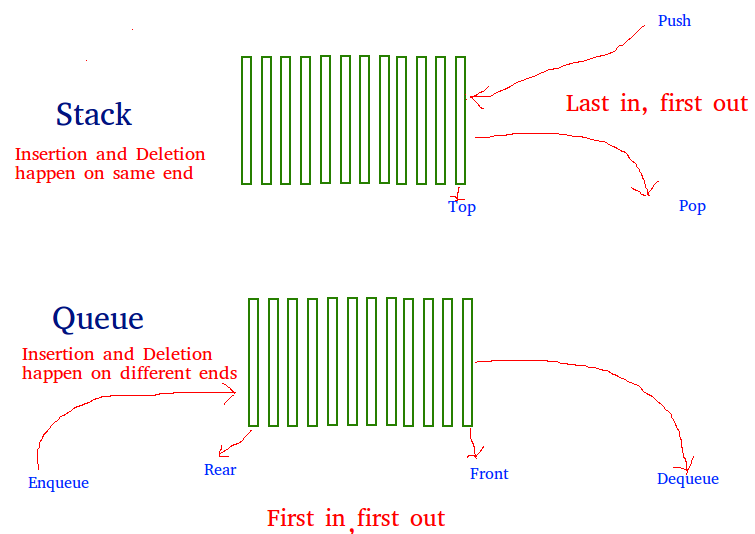
Now, suppose we want to pop the element from the stack, first the element ‘ 20 ’ will be popped out as it was inserted last.įor deleting the element from the linked list, a pointer is pointed at the last element of the list which is considered as ‘top’ of the stack.
Bottom method for linked list stack full#
When the stack will be full it will show the “ stack overflow ” error while trying to insert an element. Similarly, the elements can be inserted into the stack as well as the array. The linked list after inserting the element ‘ 20 ’. Suppose the element to be inserted is 20. The linked list will be:įor the second element, the top will be incremented again by 1 and the same process will be followed. The stack will be:įor implementing this using a linked list, first, one node is to be created and the head pointer will point to that node. Before inserting the ‘top’ will be incremented by 1. Now, suppose the first element to be inserted into the stack is 10. Let the stack can contain a maximum of 3 elements.Īs the stack is implemented here using a linked list, first the head pointer is set to NULL as there is no element in the stack. Similarly, when the stack is emptyand someone is trying to delete an element from the stack then this condition is known as stack underflow. When the stack is fulland someone is trying to insert an element into the stack then this condition is known as stack overflow. First, the maximum number of elements of the stack is taken to check the boundary conditions - overflow or underflow. An array is also a linear data structure. Here, the array is used to implement the stack data structure. The insertion of any element into the stack is called ‘ push ’ and the deletion of an element is called ‘ pop ’. # The bottom-most plate which has been kept first will remain there and will be taken out at the last.


which is put on the stack at last) will be taken first. The plate which is placed at the top (i.e. # The stack of plates in the kitchen can be a very simple and common example of a stack data structure. There are various real-life examples of the stack. # The element that is inserted at the last will be deleted at the first. Generally, the stack uses the LIFO approach i.e. It is a linear data structure and has a particular order of performing the operations. Which is exactly what we did and hence accomplished to make a Linked List behave as a Stack.# The stack is an abstract data type. So for any data structure to act as a Stack, it should have push() method to add data on top and pop() method to remove data from top. When we say "implementing Stack using Linked List", we mean how we can make a Linked List behave like a Stack, after all they are all logical entities. In this, we simply return the data stored in the head of the list. In order to do this, we will simply delete the first node, and make the second node, the head of the list. Removing Element from Stack (Linked List) Now whenever we will call the push() function a new node will get added to our list in the front, which is exactly how a stack behaves.

In order to insert an element into the stack, we will create a node and place it in front of the list. Node *front // points to the head of list Then we define our stack class, class Stack This is our Linked list node class which will have data in it and a node pointer to store the address of the next node element. In this way our Linked list will virtually become a Stack with push() and pop() methods.įirst we create a class node. With Linked list, the push operation can be replaced by the addAtFront() method of linked list and pop operation can be replaced by a function which deletes the front node of the linked list.

Stack is a data structure to which a data can be added using the push() method and data can be removed from it using the pop() method. Stacks can be easily implemented using a linked list. Implementation of Stack using Linked List


 0 kommentar(er)
0 kommentar(er)
